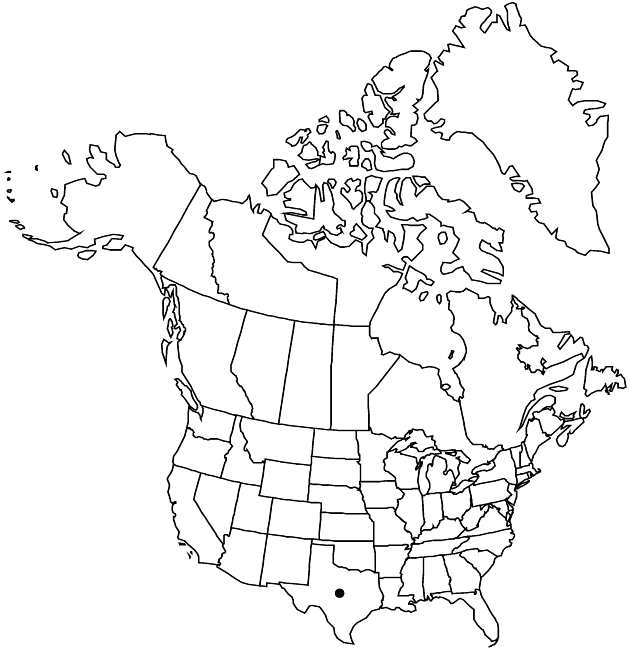Astranthium robustum
Publ. Mus. Michigan State Univ., Biol. Ser. 2: 521. 1965.
Common names: Texas western-daisy
Basionym: Astranthium integrifolium var. robustum Shinners Field & Lab. 18: 158. 1950
Treatment appears in FNA Volume 20. Treatment on page 204.
Revision as of 18:43, 24 September 2019 by FNA>Volume Importer
Annuals, taprooted. Stems usually 3–8, decumbent-ascending, sometimes 1, erect. Leaves: basal and proximal cauline 20–45 × 5–11 mm. Involucres 4–6.8 mm. Ray florets 18–35; corolla laminae white or abaxially lavender, often drying pinkish, 8–13 mm. Disc floret corollas 3.2–3.8 mm. Cypselae 1.4–2.1 × 0.7–1.2 mm, faces minutely, glandular-papillate-pebbly, uniformly sparsely to moderately glochidiate-hairy. 2n = 6.
Phenology: Flowering Mar–Jun.
Habitat: Disturbed sites in sandy or rocky soil, mesas, canyons, pine flats, roadsides, ditches
Elevation: 800–1400 m
Discussion
Astranthium robustum is known only from the trans-Pecos region.
Selected References
None.
Lower Taxa
None.
